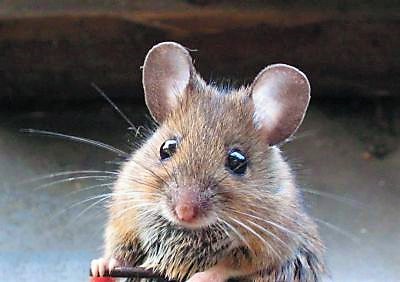What are Singing Mice?
“Study of Singing Mice Suggests How Mammalian Brains, including Human, Achieve Conversation.”

Singing Mice — Mouse Serenades from the Cloud Forests of Costa Rica
Singing mice? Yup! NY Times writer Carl Zimmer reported that these amazing “mice’s arias can last up to 16 seconds. Although the music-makers are known to offer up tunes while alone, their most thunderous performances occur in the company of others. Male mice turn to song while battling over territory. While males and females serenade each other during courtship. Each creature’s pattern of chirps is unique…”
Popular Science’s Jessica Boddy added that a group of NYU researchers recently “launched an investigation with a pair of mice housed in a cage where they could hear but not see each other.” Surprisingly, co-author Arkarup Banerjee of the NYU study told Boddy, “the animals appeared to be more polite than most humans…
“By remaining aware of when a fellow mouse was ready to start or stop its song, the mice avoided interrupting each other. Instead, they break out into song within a split second of a peer’s closing note.”
So here’s the latest news involving our favourite rodent songsters.
“By studying the songs of mice from the cloud forests of Costa Rica, researchers from NYU have discovered a brain circuit that may enable the high-speed back and forth of conversation.”
Interesting research, of course. Fascinating. But of course two of these singing mice aren’t being studied safely (for the mice) from a distance. While most are being studied in the forested wild, a couple are caged. Although the study reports the “interference” as “safe.” Not the neuroscientist Dr Amy Farrah Fowler aggressive monkey research we’re used to seeing on Big Bang. No sliced brains.
Even so, there’s mixed feelings here…
 Males of the study species, Alston’s Singing Mouse (Scotinomys teguina), “produce songs with nearly a hundred audible notes. They challenge competitors by singing in turns, alternating like talking humans,” say the study authors.
Males of the study species, Alston’s Singing Mouse (Scotinomys teguina), “produce songs with nearly a hundred audible notes. They challenge competitors by singing in turns, alternating like talking humans,” say the study authors.
“In contrast, standard laboratory mice produce ultrasonic sounds without evident exchanges.”
The new study is led by researchers at NYU School of Medicine. launching a new field by employing a novel mammalian model to examine brain mechanisms behind the sub-second precision of vocal turn-taking.
Senior study author is Michael Long, PhD, an associate professor of neuroscience at NYU School of Medicine.
“Our work directly demonstrates that a brain region called the motor cortex is needed for both these mice and for humans to vocally interact.”
“We need to understand how our brains generate verbal replies instantly using nearly a hundred muscles. If we are to design new treatments for the many Americans for whom this process has failed. Often because of diseases such as autism or traumatic events, like stroke,” explains Long.
The study was published online as the cover story of Science. The study found that, along with brain areas that tell muscles to create notes, separate circuits in the motor cortex enable the fast starts and stops that form a conversation between vocal partners.
“By segregating sound production and control circuits, evolution has equipped the brains of singing mice with the tight vocal control also seen in cricket exchanges, bird duets, and possibly, human discussion,” adds study co-first author Arkarup Banerjee, PhD, a post-doctoral scholar in Long’s lab.
Despite the ubiquity of vocal exchanges in the natural world, he says, there are no suitable mammalian models in neuroscience for their study.
Before the new report, the leading model for studying this back-and-forth was the marmoset. A primate whose conversational turns are considerably slower than human speech. And unlikely to result from the fast muscle response to sensory cues (e.g. motor cortical circuitry).
Here’s an interesting fact about singing mice:
♫ “Social Songs Different!” ♪♪
The research team found that S. teguina songs — being a series of notes that evolve predictably as the song goes on — changed in social situations as the mice had to “bend and break the songs” to converse…
To read the complete NYU Singing Mice article, go to NYU Study of Singing Mice
Live Free, Mes Amis! – Brian Alan Burhoe
Did you enjoy this Animal Post?
 IF SO, YOU MIGHT WANT TO READ WOLFBLOOD — MY MOST POPULAR ANIMAL STORY:
IF SO, YOU MIGHT WANT TO READ WOLFBLOOD — MY MOST POPULAR ANIMAL STORY:
“I JUST READ WOLFBLOOD AGAIN FOR GOOD MEASURE. ONE FOR ANY WOLF LOVER. ENJOYED IT BUT WISH IT WAS A FULL LENGTH NOVEL.” – Gina Chronowicz @ginachron
“GREAT SHORT STORY! DOES REMIND ME OF CALL OF THE WILD, WHITE FANG…” – Evelyn @evelyn_m_k
A “warmhearted and riveting” tale in the Jack London Tradition of a lone Gray Wolf and it’s search for its place in the far-flung forests of the Northcountry. FREE TO READ ==> WOLFBLOOD: A Wild Wolf, A Half-Wild Husky & A Wily Old Trapper
Source: NYU School of Medicine, PR Newswire & Civilized Bears
Singing Mice – Mouse Serenades from the Cloud Forests of Costa Rica.
Alston’s Singing Mouse, bird duets, Cloud Forests of Costa Rica, cricket exchanges, mouse courtship, Scotinomys teguina, singing mice, singing mice article, singing mice research, social songs mice, wildlife.












